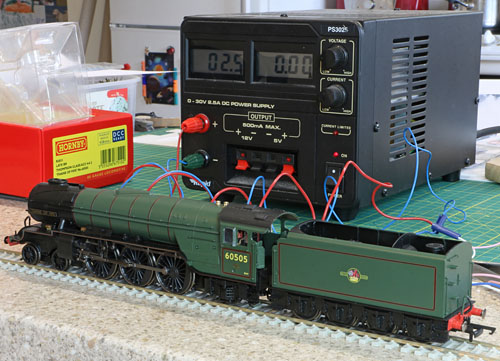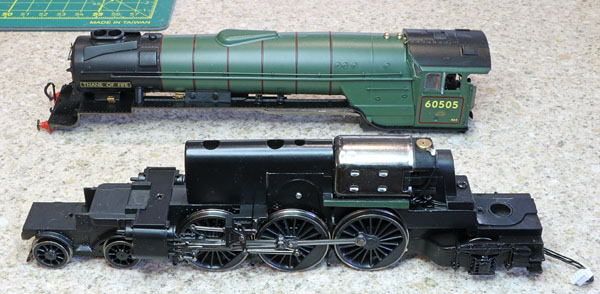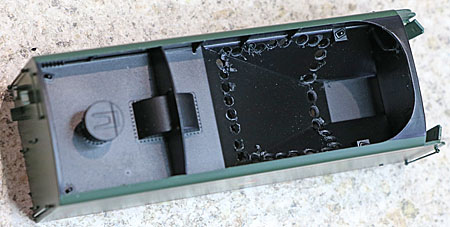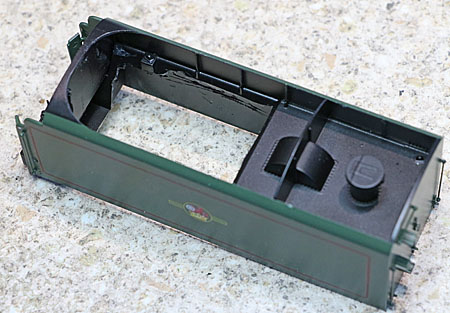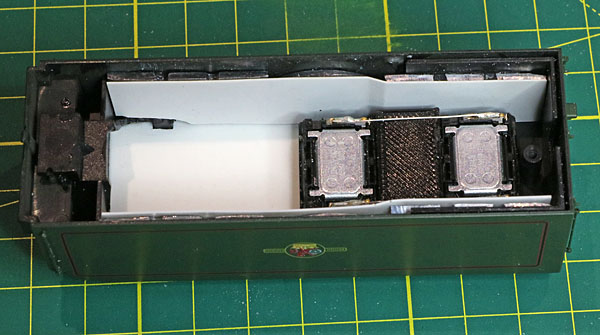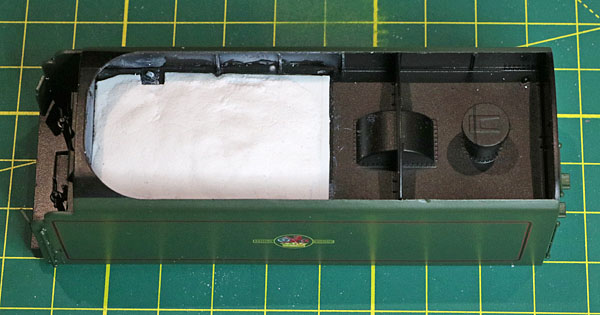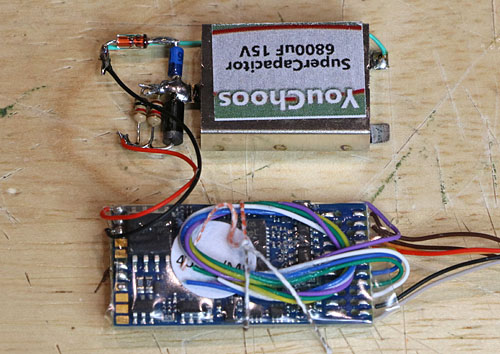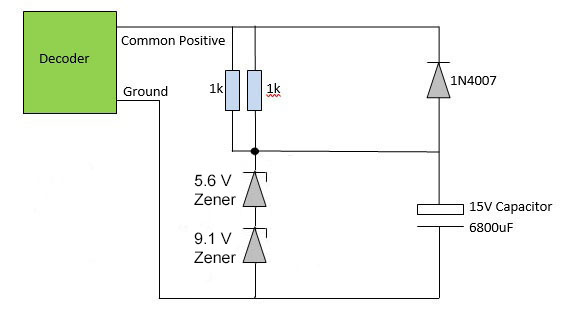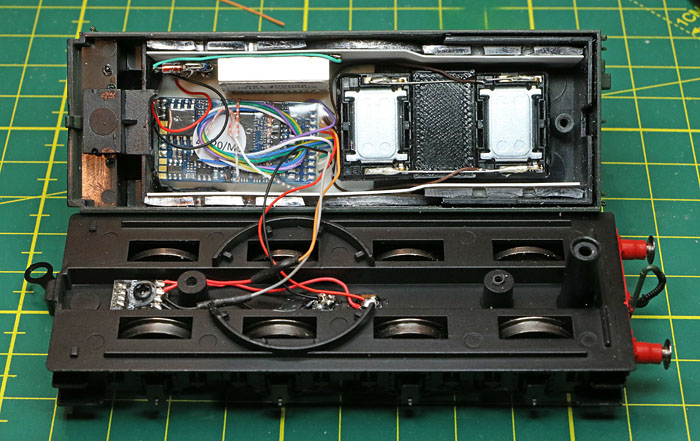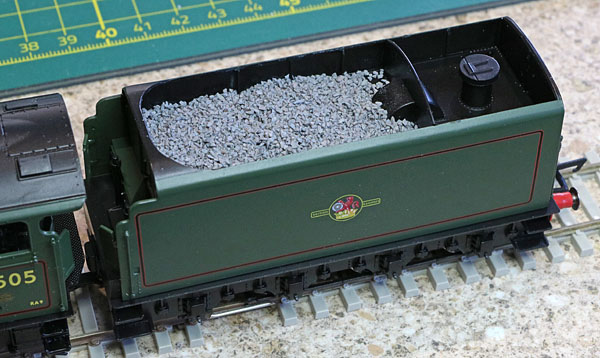
The new locomotive, straight out of the box.
|
Background: Despite the RA9 route availability rating, we have been advised that in extreme circumstances, ECML locomotives of this axle loading did occasionally run on the March to Cambridge loop line, via Histon village. 60505 was based at nearby Peterborough and so was more likely than most to have made an occasional sortie along the line, taking great care to minimise driving wheel hammer blow forces while crossing the River Ouse bridge. This was the most fragile piece of infrastructure on the line and I believe was largely responsible for its RA7 rating. Thompson's A2/2 design had a key weakness in the design of the frames at the front end of the locomotive. Inadequate frame rigidity in the vicinity of the cylinders, resulted in continual failures of joints and components in this area, until substantial frame reinforcements were eventually applied. The locomotives also suffered from poor adhesion and consequent wheel slip in wet weather.... unlike their original sure footed P2 initial design..... but to be fair, P2 crank axle failures, pony truck and worn conjugated valve gear problems were eliminated on the re-worked locomotives, so although not as elegant as their Gresley and Peppercorn stablemates, once the frames were strengthened, the design was not a total disaster. |
|
DC Testing:
(The current meter reading went up a little when I actually connected the PSU to the rails.) The locomotive is a fairly smooth runner in DC configuration, straight out of the box. Slow speed running is quite reasonable for a Hornby steam loco under DC control. Using my bench power supply which provides pure DC, the motion is virtually silent at slow speed, but there is some cyclic speed reduction when running really slowly. I hope the DCC decoder back emf load compensation system will be able to deal adequately with this situation, which may also (wishful thinking?) improve as a result of running in. |
|
DCC Sound Configuration: The plan is to install an ESU LokSound V5 decoder with a Locoman A3 sound file. A twin dynamic drive 4 ohm speaker and an AVX 6800uF stay alive supercapacitor, with charging voltage protection, will complete the fit. All these items will be accommodated within the tender. Additional ballast weight will be fitted into the tender if at all possible. So much for the plan, next challenge is to dismantle the tender..... and then we'll see if the plan is viable :-) |
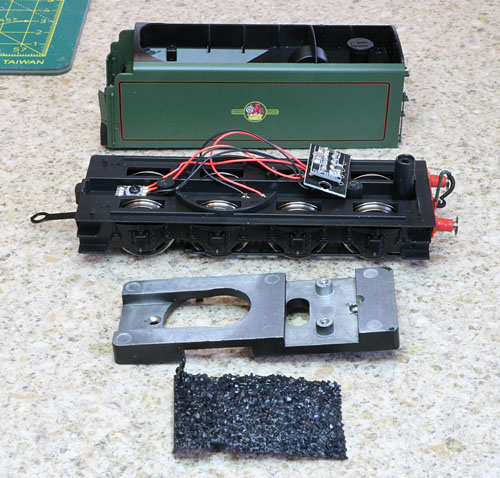
|
Inside the tender: The fixing screw is hidden by the rear coupler, which must first be removed. A lowish dummy coal load can be extracted from the coal hopper, but to fit everything in, I will probably have to construct a new coal level, closer to the top of the tender. A ballast weight doubles as a 28mm round speaker carrier and 8 pin DCC socket holder. This will also have to be removed and custom ballast added in any spare space. Build problems: When the tender top and its chassis were first separated, it was apparent that the screw that should have been clamping the four way electrical socket to the chassis was loosely in place, but as soon as the ballast weight was removed, it fell out. (The shallow thread was stripped and I had to fit a longer screw to secure the socket assembly.) Also two of the wires had been trapped between the weight and the plastic speaker ridge on the chassis. The copper core of the black wire was exposed, if the red wire had also been penetrated, the consequent short circuit would have disabled the loco. The well publicised rear facing water scoop moulding was also removed and glued back in place in the correct forward facing position. |

Wiring and loose screw problems. The screw in fact popped out again when I next attempted
to re-insert the loco plug into the tender socket. I had to replace it with a longer screw.
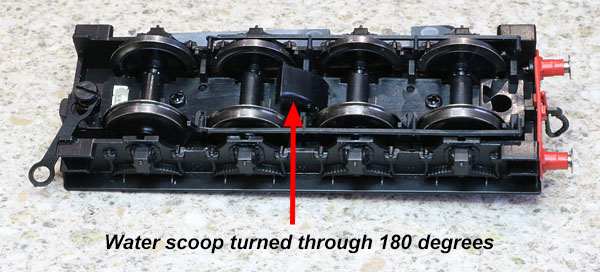
After correcting the water scoop orientation
|
Motor suppressor capacitor hunt: Any motor suppressor capacitors found within the locomotive (or tender) will be removed as they compromise DCC BEMF performance.
Not an issue. No capacitors found inside the locomotive. |
